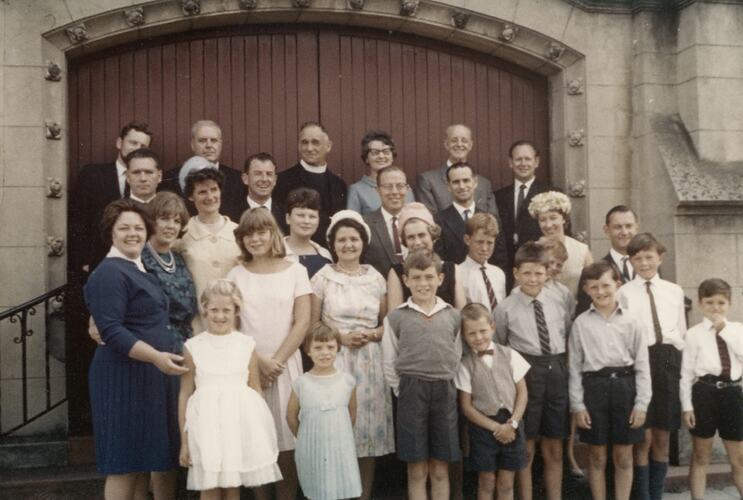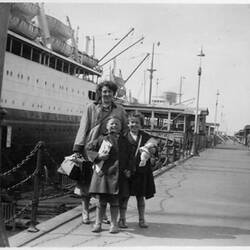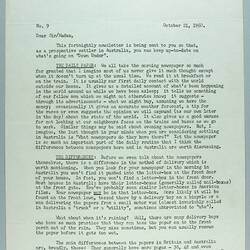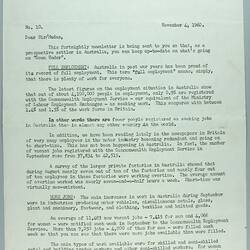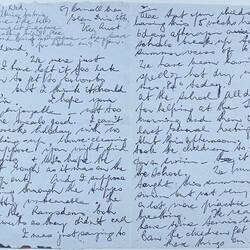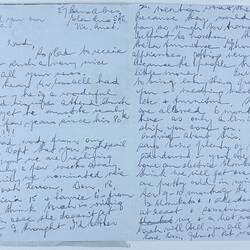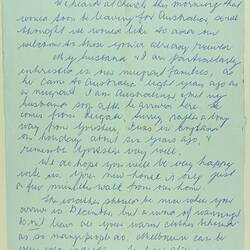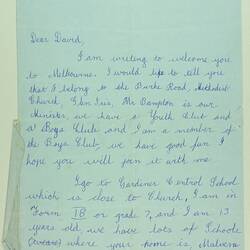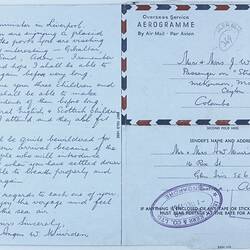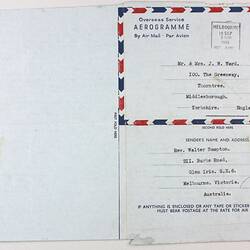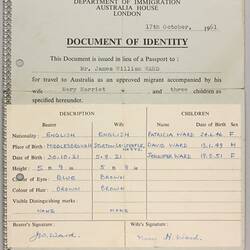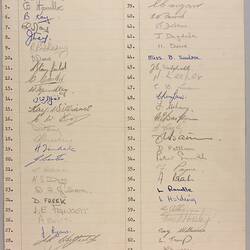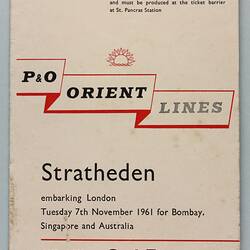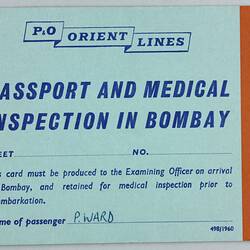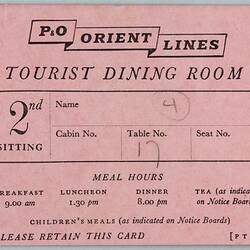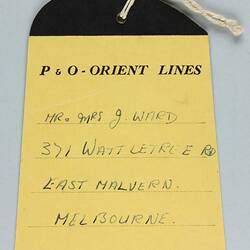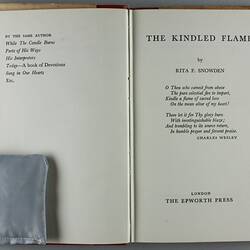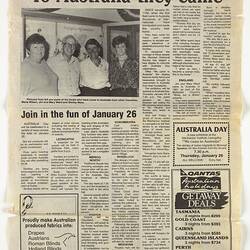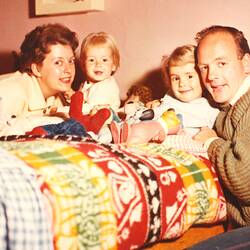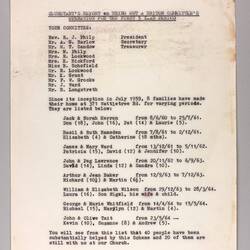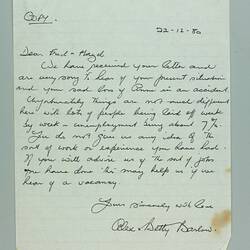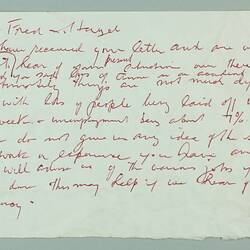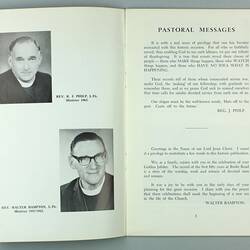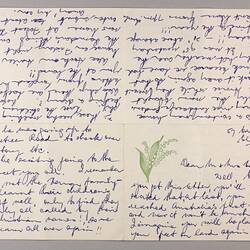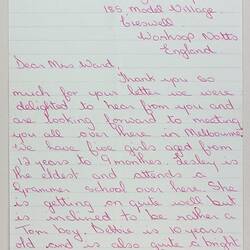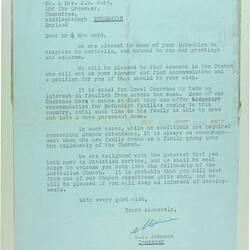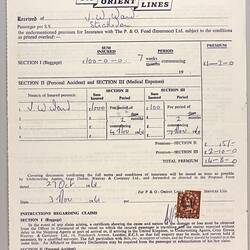Summary
The Methodist Church, Burke Road, East Malvern formerly known as the Gardiner Methodist Church, was established in 1913 to accommodate the growing Methodist community in the newly developing residential area of East Malvern, Victoria. The Burke Road Methodist Church was responsible for the sponsorship of a considerable number of British families under the 'Bring out a Briton' scheme. The church played a pivotal role in the Malvern community until 1984, when it was closed after the formation of the Uniting Church of Australia.
The Methodist Church, Burke Road, East Malvern formerly known as the Gardiner Methodist Church, was established in 1913 to accommodate the growing Methodist community in the newly developing residential area of East Malvern, Victoria. The Burke Road Methodist Church was responsible for the sponsorship of a considerable number of British families under the 'Bring out a Briton' scheme. The church played a pivotal role in the Malvern community until 1984, when it was closed after the formation of the Uniting Church of Australia.
The land for the Burke Road Methodist Church was first secured by the Methodist Church in 1913, 'at a cost of £461' (Gosbell, 1963: 5). The first weatherboard church building was situated on the north-west corner of Payne Street and Burke Road. By 1926 a larger brick building was completed 'at a cost of £6040', facing Burke Road (ibid., 1963: 6). At this point, the name of the Church was changed from 'Gardiner' to 'Burke Road, East Malvern'.
In 1957, the Australian Government launched the 'Bring out a Briton' (BOAB) scheme to bolster the proportion of British migrants in Australia. The Australian community was encouraged 'to take responsibility for sponsoring particular British families and assist them to settle' (DIMA, 2001: 6). As a result of a suggestion made by presiding Reverend Walter Bampton, the Burke Road Methodist Church 'Bring Out A Briton' scheme was officially launched in February 1959 at a special church service 'at which leaflets and share application forms were distributed' (Barlow, 1972: 4), inviting the congregation to make loans towards the purchase of a house. This was just one of many similar examples of the sponsorship role played by the Methodist Church in Victoria. By 1960, the Methodist Church had already formed '14 or 15 Bring out a Briton committees in Victoria' (The Age, 1960: 26).
A special 'Bring Out A Briton Committee' was appointed to inaugurate the scheme, with Alex George Barlow as Secretary. The purpose was to - '(1) strengthen the Church fellowship; (2) to assist British Methodist families to migrate to better living conditions; and (3) to further the Commonwealth Government's plans to bring out the best type of migrants' (Gosbell, 1963: 13). A nearby house at 371 Wattletree Road was purchased by the church community and the first family to accept the Church's invitation were Mr. and Mrs. J.D. Herron and their four children. In 1964, the committee secretary, Alex Barlow, reported that 'since its inception in July 1959, '8 families have made their home at 371 Wattletree Rd' (Barlow, 1964: 1).
Assisted migrants who 'were those sponsored and hosted by charitable organisations or the churches' (Jupp, 2005: 2) often had a higher settlement success rate due to the active community support they received. For many others, a combination of homesickness, differing customs, unrealised expectations and the loss of family and friends, resulted in a high return rate of migrating Britons with an 'average at around 25 per cent' (Thomson, 2005: 106). Mary Ward, along with her husband and three children, was sponsored by the Burke Road Methodist Church when they migrated to Victoria from Yorkshire in 1961. She remembers how, before they left Yorkshire, 'the church folk were writing to us, telling us about themselves, church activities, work, schools and the area we would be coming to. We were replying to them and very soon we felt like we knew them already' (Ward, 2001: 12). Whilst it was difficult to leave England, the Wards felt welcomed by the Burke Road Methodist Church community.
In 1984, The Burke Road church was closed and demolished to create flats for the elderly of Malvern. Many residents from the surrounding area, particularly those that had been assisted by the church through the 'Bring Out A Briton' scheme, 'felt this loss very deeply' (Ward, 2001: 16).
References
Barlow, A. G. (1964) 'Secretary's Report on Bring Out a Briton Committee's Operations, Methodist Church, East Malvern: July 1959 to May 1964'. Unpublished Manuscript. Museum Victoria, Victoria.
Barlow, A. G. (1972) 'Minute book and associated papers for the Bring Out A Briton Committee of the Methodist Church Burke Road, East Malvern: 8 July 1959 to 15 March 1972'. Unpublished Manuscript. Museum Victoria, Victoria.
'Church Members Tardy, So Chaplain Brings Out His Own Britons', The Age, 12th October, 1960.
Department of Immigration and Multicultural Affairs (2001) 'Immigration: Federation to Century's End'. Commonwealth of Australia, Australia.
Gosbell, E. J. (1963) 'A cloud of witnesses. Burke Road, East Malvern Methodist Church Golden Jubilee Record 1913 - 1963'. McKellar Press Pty Limited. Malvern, Victoria.
Ewing Memorial Uniting Church. (2010) 'History: Ewing Memorial Uniting Church'. Malvern East, Victoria, viewed 11 June 2013, < http://www.ewing.org.au/history>
Jupp, J. (2005) 'Review: Ten Pound Poms: Australia's invisible migrants by A. James Hammerton and Alistair Thomson'. Australian National University, New South Wales.
Melville, J. (1988) 'Ten Pound Poms'. New Statesman & Society. New Statesman Limited, United Kingdom.
More Information
-
Keywords
Migration & Settlement, Migration Schemes, English Immigration, Religions: Methodist, Churches, Immigration, Migrants, Assisted Immigration, Housing, Accommodation
-
Authors
-
Article types
